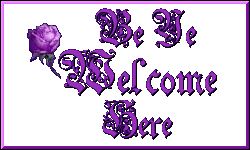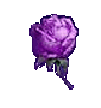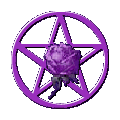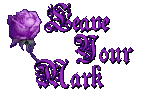The World Of Fey....




Fairy - Fae - Fay
Definition from "Funk & Wagnalls Multimedia Encyclopedia"-- "a diminutive supernatural creature, generally in human form, dwelling in an imaginary region called fairyland; and the stories of its interventions through magic in mortal affairs. The term fairy is also loosely applied to such beings as brownies, gnomes, elves, nixies, goblins, trolls, dwarfs, pixies, kobolds, banshees, sylphs, sprites, and undines. The folk imagination not only conceives of fairyland as a distinct domain, but also imagines fairies as living in everyday surroundings such as hills, trees, and streams and sees fairy rings, fairy tables, and fairy steeds in natural objects. The belief in fairies was an almost universal attribute of early folk culture. In ancient Greek literature the sirens in Homer’s Odyssey are fairies, and a number of the heroes in his Iliad have fairy lovers in the form of nymphs. The Gandharvas (celestial singers and musicians), who figure in Sanskrit poetry, were fairies, as were the Hathors, or female genii, of ancient Egypt, who appeared at the birth of a child and predicted the child’s future."
Definition from "Encyclopaedia Britannica"-- "also spelled faerie or faery; a mythical being of folklore and romance usually having magic powers and dwelling on earth in close relationship with humans. It can appear as a dwarf creature typically having green clothes and hair, living underground or in stone heaps, and characteristically exercising magic powers to benevolent ends; as a diminutive sprite commonly in the shape of a delicate, beautiful, ageless winged woman dressed in diaphanous white clothing, inhabiting fairyland, but making usually well-intentioned intervention in personal human affairs; or as a tiny, mischievous, and protective creature generally associated with a household hearth."
In ancient Greek literature, the sirens in Homer's Odyssey are fairies, and a number of the heroes in his Iliad have fairy lovers in the form of nymphs.
The Gandharvas (celestial singers and musicians), who figure in Sanskrit poetry, were fairies, as were the Hathors, or female genii, of ancient Egypt, who appeared at the birth of a child and predicted the child's future.
Aibell - An Irish 'fairy' goddess.
Aine - a fairy queen in County Limerick.
Aeval - Among the Celts of Ireland, Aeval was the Fairy Queen of Munster. She held a midnight court to determine if husbands were satisfying their wives' sexual needs, or not, as the women charged.
Alfheim - in Scandinavian mythology, a celestial city inhabited by the elves and fairies.
Anjanas - Las Anjanas are typical faeries of Cantabria, there are small and nice females who sometimes appear to people like part human and part animal (usually, it's bird or fish, but it's not always fifty-fifty). Good-willing and peaceful, they can be found in woods, near small streams and that sort of quiet places.
Ati - A Maori chief who caught a lovely fairy in a net and married her.
Banshee or Benshee - an Irish fairy attached to a house. Common name for the Irish Bean Sidhe (see below). In Scotland the banshee is known as caoineag (wailing woman) and, although seldom seen, she often heard in the hills and glens, by lakes or running water.
Bean Sidhe - In Irish folklore, the Bean Sidhe (woman of the hills) is a spirit or fairy who presage a death by wailing. She is popularly known as the Banshee. She visits a household and by wailing she warns them that a member of their family is about to die. When a Banshee is caught, she is obliged to tell the name of the doomed. The antiquity of this concept is vouched for by the fact that the Morrigan, in a poem from the 8th century, is described as washing spoils and entrails. It was believed in County Clare that Richard the Clare, the Norman leader of the 12th century, had met a horrible beldame, washing armor and rich robes "until the red gore churned in her hands", who warned him of the destruction of his host. The Bean Sidhe has long streaming hair and is dressed in a gray cloak over a green dress. Her eyes are fiery red from the constant weeping. When multiple Banshees wail together, it will herald the death of someone very great or holy. The Scottish version of the Banshee is the Bean Nighe. Aiobhill is the banshee of the Dalcassians of North Munster, and Cliodna is the banshee of the MacCarthys and other families of South Munster.
Bendith Y Mamau - The Bendith Y Mamau ("The Mothers' Blessing") is a rather unpleasant clan of Welsh fairies. They are ugly creatures, and sometimes regarded as the result of interbreeding between goblins and fairies. They steal children and substitute them for their own ugly ones, called Crimbils. Through the intervention of a witch, the parents can regain the stolen child, who will remember nothing of its time with the Bendith Y Mamau, except for a vague recollection of sweet music.
Brownie - a Scottish domestic fairy; the servants’ friend if well treated. Brownies are brown or tawny spirits, in opposition to fairies, which are fair or elegant ones; a legendary good-natured elf that performs helpful services at night.
Bukura e dheut - A beautiful fairy among the ancient Albanians who is always very helpful. The supreme god Tomor is her lover. She is sometimes connected with the underworld and shows some demonical aspects. Her name means "the beauty of the earth". Her sister is Bukura e detit, and her name means "the beauty of the sea".
Bug, Bugbear or Bugaboo, any imaginary thing that frightens a person; something that causes fear or distress out of proportion to its importance.
Changeling - an ill, sickly child. It was said that the fairies would take a healthy human child, and leave in its place one of their sickly elves.
Cliodhna - The Irish goddess of beauty. She later became a fairy queen in the area of Carraig Cliodhna in County Cork.
Colt-pixy - A mischievous fairy. A pixy, puck, or fairy. To colt-pixy is to take what belongs to the pixies, and is specially applied to the gleaning of apples after the crop has been gathered in; these apples were the privilege of the pixies, and to colt-pixy is to deprive the pixies of their perquisites.
Corrigan - In Brittany folklore, a female fairy. She is said to have been one of the ancient druidesses, and therefore malicious towards Christian priests. Corrigan is fond of pretty human children, and is usually blamed for all changeling substitutions.
Dagda - king of the fairy race of the Tuatha de Danann in Irish mythology. He was celebrated not only for his prowess with a battle club, magic harp and cauldron, but was also known for his greed and cruelty.
Daoine maite - Literally, the good people. They are the fairies of contemporary Irish folklore.
Dones d'aigua - Dones d'aigua (Maids of the Water) are typical beings of Cataluña, and they appear in many myths. They live in any place where they can find clean water (wells, springs, fountains, lakes), but they can also be found in woods and caves. They appear as women of incredible beauty, although half of their body can be fish- or bird-like (as for many other faeries of Spanish folklore and Indo-European myths). Dones d'aigua often guard wonderful treasures. They are always good and kind to humans.
Duende - a Spanish house-spirit.
Dwarf - a diminutive being human or superhuman.
Dwerger, Dwergugh or Duergar - Gotho-German dwarfs, dwelling in rocks and hills
Earthmen, The - gnomes and fairies of the mines. They are a solemn race, but they can laugh and dance most merrily
Elf - fairies of diminutive size, found mainly in Teutonic and Norse folklore, the elves were originally the spirits of the dead who brought fertility. Later they became supernatural beings, shaped as humans, who are either very beautiful (elves of light) or extremely ugly (dark / black elves). They were worshipped in trees, mountains and waterfalls. The Danish elves are beautiful creatures, but they have hollow backs. The Celtic elves are the size of humans. They were supposed to be fond of practical jokes.
Erreka-Mari - A chieftain among the faeries, this is a Mari siren (Erreka means creek) that lives near small streams. Her name changes according to toponymia, and she's also known as Mari-Arroka or Mari-Muruko.
Esprit Follet - the house-spirit of France. A bogle which delights in misleading and tormenting mortals.
Fair Family/Fair Folk - Welsh nickname
Fairy or Faerie - a super-natural being, fond of pranks, but generally pleasing. Of nursery mythology they are the personification of Providence. The good ones are called fairies, elves, elle-folks, and fays; the evil ones are urchins, ouphes, ell-maids, and ell-women. Alternate spellings include: Faerie, Fai, Faierie, Faiery, Fair, Fairye, Farie, Fary, Fay, Fayerie, Fayery, Fayry, Fee, Feiri, Fery, Fey, Feyrie, Feyrye, Phairie, Pharie, Pherie (from the Latin: Fata "Fates").
Fairyland - the imaginary land where fairies are supposed to dwell; a charming, enchanting place; dreamland; a place of great delight and happiness.
Familiar - a spirit attendant on witches, etc; a spirit often embodied in an animal and held to attend and serve or guard a person.
Fand - In Celtic myth Fand is a faery queen, who was once married to the sea god Manannan. After he left her she was preyed upon by three Fomorian warriors in a battle for control of the Irish Sea. Her only hope in winning the battle was to send for the hero Cuchulainn who would only agree to come, if she would marry him. She reluctantly acquiesced to his wishes, though when she met him, she fell as deeply in love with him as he was with her. Manannan knew that the relationship between the human world and the world of the faery could not continue without in eventually destroying the faeries. He erased the memory of one from the other by drawing his magical mantle between the two lovers. Fand was also a minor sea goddess who made her home both in the Otherworld and on the Islands of Man. With her sister, Liban, she was one of the twin goddesses of health and earthly pleasures. She was also known as "Pearl of Beauty". Some scholars believe she was a native Manx deity who was absorbed in the Irish mythology.
Fata - an Italian fay, or white lady.
Fates - the three spirits (Clotho, Lachsis, and Atrpos) which preside over the destiny of every individual.
Fay - same as a Fairy. Early form of the word. The word could be derived from fae, faie, fata (plural), the Fates.
Feeorin - type of diminutive fairy in the folklore of England. It is also the collective word for fairies who are usually friendly towards mankind, or at least neutral. They are depicted as small creatures with a green skin and wearing red hats. They enjoy singing and dancing.
Finvarra - king of the Connaught Fairies. Onagh is his consort, supreme King and Queen of the Sidhe. He was famed for his benevolence toward humans.
Folk - fairies, also called “people,” “neighbours,” “wights.” The Germans have their kleine volk (little folk), the Swiss their hill people and earth people.
Frau Welt - In European folk believe, the name that was given to the female fairy mistress by medieval church people; and according to them, the Devil.
Fylgiar - sprite formed from the caul or membrane born with some children, attendant spirit, controlled by human master, takes form of masters totem animal or acts as his/her double, shadows, seen only by their masters of those with second sight.
Gan Ceanach - word means "Love Talker", a debonair little man who appeared in lonely glens smoking his clay pipe or dudeen. He had no shadow, the birds stopped singing and a mist unfurled about him. Would seduce young mortal maidens with his twinkling black eyes and enchanting gentle voice. Only if they kissed him they were doomed, for he would disappear as quickly as he had come, leaving them to pine to death.
Gnome - the guardian of mines, quarries, etc.
Good Folk - the Brownies or house-spirits.
Good Neighbors - Scottish and Irish nickname
Good People - Irish reference to the Sidhe
The Green Children - Faerie reference used in medieval literature
Gwragedd Annwn - lake fairies of Ladies of the Lake from the folklore of Wales. Described as being beautiful maidens with long golden hair. They are said to be gentle and live harmoniously in families under the lakes and sometimes marry mortals.
Gyre-Carlin - queen of the fairies in Fyfe area of Scotland.
Habonde - Fairy in English folklore who was said to be the consort of Hobany. Described as a beautiful young woman with dark plaited hair, wearing on her head a golden circlet on which there is a star. This signifies that she is queen of the fairies, possibly the French fairies.
Habundia - queen of the White Ladies.
Habonde - Fairy in English folklore who was said to be the consort of Hobany. Described as a beautiful young woman with dark plaited hair, wearing on her head a golden circlet on which there is a star. This signifies that she is queen of the fairies, possibly the French fairies.
Hag - The hag is a fairy from the British Isles. She is said to be the traces of the most ancient goddesses. The hag is regarded as the personification of winter. In the winter months she is usually old and very ugly looking. As the season changes though she becomes more and more beautiful, and younger. Tangles in the manes of horses and ponies are called hag-knots, supposed to be used witches as stirrups.
Hamadryad - a wood-nymph. Each tree has its own wood-nymph, who dies when the tree dies.
Jinnee (s) or Jinn (p) - fairies in Arabian mythology, the offspring of fire. They reproduce like human beings, and are lead by a race of kings named Suleyman, one of whom “built the pyramids.” Their chief abode is the mountain Kâf, and they appear to men under the forms of serpents, dogs, cats, monsters, or even human beings, and become invisible at pleasure. The evil jinn are hideously ugly, but the good are exquisitely beautiful. According to fable, they were created from fire two thousand years before Adam was made of earth.
Kelpie - in Scotland, an imaginary spirit of the waters in the form of a horse.
Kepler’s Fairy - the fairy which guides the planets. Kepler said that each planet was guided in its elliptical orbit by a resident angel.
Kobold - according to German folklore, kobolds are spirits who dwell in mines and who like to torment humans. They are tricksters and not inherently evil. In the 16th and the 17th century, they were usually depicted on paintings as little devils with a conical hat, pointy shoes, a hairy tail, and bald feet instead of hands. They are considered to be the most dangerous and most ugly of all the fairy-like beings. Some sources suggest that kobolds are related to the Brownies
Laminak - Basque fairies, related to the Celtic little people. The Laminak live underground in beautiful castles.
Lamiñas - Lamiñas are evil faeries of the País Vasco. They live in the woods and in the shores of streams and rivers. They usually appear as women (they can also appear as men, but that is rare). The only means to distinguish them from normal people is to see that part of their body which is fish or bird. Of course, usually it is easy because it is fifty-fifty, but the animal detail can sometimes be as small as a goat leg or a chicken foot.
Leprechaun - Very small sprites who sometimes live in farmhouses or wine cellars. They are known to aid humans and perform small labors for them. Sometimes they ask humans for supplies and furniture, for which in return they give objects which bring luck and fortune. Leprechauns are called fairy cobblers, for they make shoes for elves (Irish leith-bhrogan, from leith-brog, one-shoe maker, so called because he is always seen working at a single shoe). They are seen quite often by humans and are described as merry little fellows gaily dressed in old-fashioned clothes; green, with a red cap, leather apron, and buckled shoes. When they finish their daily tasks, leprechauns like to organize wild feast, during which time they are referred to as cluricauns. These (often drunk) cluricauns can then be seen riding in moonlight on the back of a dog or a sheep. According to popular belief, a leprechaun possesses a treasure (usually a pot of gold) which a human may obtain if he succeeds in capturing one, which is extremely difficult. Even after capture, a person may not take his eyes off of him for an instant, for then he will vanish. Leprechauns are mainly found in Irish folklore.
Lliannan-She - In the Isle of Man, a spirit friend, a female fairy who waited to encounter men. If one spoke to her she followed him always, but remained invisible to everyone else.
Lorelei - in German legend a fairy similar to the Greek Sirens who lived on the rock high on the bank of the Rhine River and by her singing lured the sailors to their death.
Lunantishee - The Lunantishee, or Lunantishess, are a tribe of fairies who guard blackthorn bushes (one of the Fairy Trees). They will not allow that a blackthorn stick is cut on May 11th (originally May Day) or November 11 (originally All Hallows Eve). Should on person manage to cut a stick, some misfortune will surely befall him or her.
Mab, the farles’ midwife. Queen Mab refers to as the queen of the fairies (see below).
Mab, Queen - Mab is the Queen of the Faeries. She is often portrayed as a trickster who robs dairies and steals babies. Mab first appeared in post-sixteenth century English literature, in the poems Nimphidia, and Entertainment at Althorpe by Ben Jonson. The origin of Queen Mab is most likely Celtic, either from Mabb of Welsh Mythology or Maeve (Maebhe) of the Cuchullain tales.
Mermaid - a sea-spirit, the upper part a woman and the lower half a fish.
Merrow - both male and female, are spirits of the sea, of human shape from the waist upwards, but from the waist downwards are like a fish. The females are attractive, but the males have green teeth, green hair, pig’s eyes, and red noses. Fishermen dread to meet them.
Naiad - water-nymphs.
Nis or Nisse - a Kobold or Brownie. A Scandinavian fairy friendly to farmhouses.
Nix or Nixie - a water-spirit. The nix has green teeth, and wears a green hat: the nicie is very beautiful.
Oaf - a foolish child thought to be a changeling, left by the fairies in the place of the stolen one.
Oberon - the king of the fairies, husband of Titania, queen of the fairies, in medieval folklore. Shakespeare introduces both Oberon and Titania, in his play "Midsummer Night’s Dream". Described as being a dwarf with a beautiful face and kingly deportment. He is capable of playing pranks and working mischief both with fairies as well as with humans. He haunts the English woods and forests with his sprites led by Puck.
Onagh - consort of Finvarra. They were the supreme King and Queen of the Sidhe.
Oseron - king of the fairies.
Ogre - an inhabitant of fairyland said to feed on infant children.
Orends - mountain nymphs.
Ouphe - a fairy or goblin. A changeling or elf child, that is, one left by fairies; a deformed or foolish child; a simpleton; an oaf.
Peri - a Persian fairy. Evil peris are called “Deevs”
Perit - In Albanian folklore, they are female mountain deities of great beauty. They are dressed entirely in white and are regarded as good fairies. They can become very angry towards those who spill bread, and will give these sinners a hump.
Pigwidgeon - a fairy of very diminutive size or dwarf; anything very small.
Pixy or Pixie - a Devonshire fairy, same as Puck.
Plant Rhys Dwfen - The Plant Rhys Dwfen ("children of Deep Rhys") are a tribe of fairies who inhabit a small land which is invisible because of a special herb that grows there. They are handsome, less than average in height, and grateful to those who treat them fairly. They often visit markets in Cardigan where they pay such high prices for goods that ordinary buyers can not compete with them. When visiting the main land, they assume human form.
Portunes - Portunes are tiny medieval fairies, described by Gervase of Tilbury as being the size of a finger. They are very old men with wrinkled faces who work on human farms. Friendly and helpful they may be, at night they cannot resist grabbing the bridle of a horse and leading the horse and its rider into ponds.
Puck - a merry little fairy spirit, full of fun and harmless mischief; (and from "Encyclopaedia Britannica")--medieval English folklore, a malicious fairy or demon. In Elizabethan lore he was a mischievous, brownielike fairy also called Robin Goodfellow, or Hobgoblin. As one of the leading characters in William Shakespeare's Midsummer Night's Dream, Puck boasts of his pranks of changing shapes, misleading travelers at night, spoiling milk, frightening young girls, and tripping venerable old dames. The Irish pooka, or púca, and the Welsh pwcca are similar household spirits.
Raja Jinn Peri - The King of Fairies in Malay mythology.
Rod - In Slavic mythology, the Rod are the spirits of deceased female ancestors and are considered to be goddesses of fate and fairies. As three women they appear at the cradle of a newborn child and decide the child's fate. In invisible letters they write on the child's forehead the life span and the way he or she will die. They also decide whether the child will live a poor or rich life, and the measure of poverty or wealth. They can be compared with the Norns, the Norse goddesses of fate, and the Greek Moirae.
Ryme - the Frost giant, the enemy of the elves and fairies. At the end of the world this giant is to be the pilot of the ship Naglefarë.
Salamander - a spirit which lives in fire.
Seelie Court - The Court of the kind and benign fairy host, usually seen around twilight in long solemn processions. These fairies help the poor with gifts of corn and bread. The opposite of the Seelie Court ("Blessed Court") is the evil Unseelie Court.
Sidhe - (pronounced 'shee') fairy people in the folklore of Ireland. Name comes from the mounds or ancient barrows known as sidh where they are said to live and means "people of the (fairy) hills". These faeries are described as being aristocrats, beautiful, great size, great age, great power, beautiful musicians, domestic, malevolent if harmed / disturbed, thin , up to six feet in height, handsome, youthful, shadowy, soft-skinned, long flowing hair, and if clothed - blindingly white, and live under faerie hills or on floating islands. Usually these fairies are attracted to those who are beautiful as well as wealthy.
Sluagh, The - name of the Unseelie Court or the evil fairies in the folklore of Scotland. The name means the Host, which is a euphemism to avoid invoking them with the mention of their name and deter them from inflicting harm. They are believed to be the Fallen Angels that roam the midnight skies of the earth searching for lost souls. The Slaugh are also believed to be responsible for causing sickness and death among domestic animals and to lead humans astray.
Sluag - Pronounced 'sloo-ah'. Sluag was the Pictish/Scottish fairy of the Highlands and Host of the Unforgiven Dead. Related to the Irish/Celtic Sluagh.
Snow Queen - fairy queen in the folklore of Denmark. She is described as dazzling in her loveliness and as beautiful as the ice crystals themselves. She is the Spirit queen of the ice realm, who travels in the blizzards blown from the Arctic wastes. The Snow Queen will entice mortal men to follow her, but to be loved by her means instant death.
Sprite - A sprite is a kind of fairy or elf. Sprite comes from the Latin word spiritus or spirit and once meant “soul” or “ghost.” Sprites are used in many folktales. Sprites are creatures of the element water. They are found only in places where it is serene and cool. They like to play with nymphs or torment butterflies, but the butterflies don’t really mind. Sprites have one very important job, which is going around and changing the colors of a tree’s leaves in Autumn. They have many cans of bright paint in every shade between red and yellow. This makes sure they don’t run out. Sprites are very creative. They are muses, artists, and poets. They are some of the most creative fairies. Some even decide to bond or marry a human or elf and stay with them their whole lives.
Stromkarl - a Norwegian musical spirit, like Neck.
Sylph - “Sylph” comes from the Greek word silphe meaning a butterfly or moth. They were first named by the Rosicrucians and Cabalists in their folklore. The sylph is a female spirit of the element of air. These were like invisible angels whose voice could be heard in the wind. Sylphs defend the high mountain peaks and wilderness mountains that are home to them. Sylphs look like tall, lithe humans with huge, feathered wings sprouting from their backs. These wings are almost two times it’s body length, but they fold up behind the sylph. They have large, hawk-like eyes and sharp, angular faces. A sylph can live to be hundreds of years old, often reaching one thousand, but never seeming to grow old. The smaller sylph are sometimes called cherubs or fairies. Sylphs are loners, and are content to fly with the birds.
Tangotango - A fairy of the heavenly race in Maori myth. When she heard of the handsome young god Tawhaki, she looked for him and found him one night while he was sleeping in the woods. She lay with him night after night until she became pregnant. Then she left and later had a daughter called Arahuta.
Tennin - In Japanese Buddhism, an angel or fairy, a heavenly, beautiful person who may appear on a mountain. To meet one, the pilgrim has to climb to the summit.
Titania - the queen of the fairies, wife of Oberon, king of the fairies, in medieval folklore. Shakespeare introduces both Oberon and Titania, in his play "Midsummer Night’s Dream".
Troll - a hill-spirit, which is why Trolls are called Hill-people or Hill-folk, supposed to be immensely rich, and especially dislike noise.
Tuatha Dé Danaan - (Tribe of Dana) the pre-Christian gods of Ireland, sometimes represented as heroes or fairies.
Turehu - A race of fair-haired fairies.
Tylwyth Teg - The Tylwyth Teg ("the fair people") are Welsh fairies who live in lakes or streams or in hollows of the hills. The females are called y mamau (the mothers), a title which links them to the pagan Celtic deities, the Matres. Associated with them are the usual traditions of moonlight dance, the supernatural passage of time, the stealing of children, and the substitution of changelings. They are especially interested in children with golden hair. Their favorites they enrich with precious gifts, which disappear when these gifts are spoken of.
Un'Dine - a water-nymph.
Unseelie Court - The evil counterpart of the Seelie Court is always unfavorable towards mankind. The part which flies through the sky at night is called the 'Horde'. Mortals unfortunate enough to cross the Horde's path are taken along for a hell-ride. These poor victims are beaten and pinched and forced to participate in the bizarre nocturnal activities of these creatures. The Unseelie Court ("Unholy Court") solely consists of those of the fairy-like beings which are the most ugly and evil.
Urgan - born and christened a mortal, but stolen by the king of the fairies and brought up in elf-land (English folklore).
Wee Folk - Scottish and Irish nickname for faeries
White Lady - of the royal family of Prussia. A “spirit” said to appear before the death of one of the family.
White Lady of Ireland - the banshee or domestic spirit of a family.
White Merle - of the old Basques. A white fairy bird, which, by its singing, restored sight to the blind.
Wight - any human creature, as a “Highland wight.” Dwarfs and all other fairy creatures.
Will-O'-The-Wisp - a spirit of the bogs, whose delight is to mislead belated travellers.
Wraith - the ghost of a person shortly about to die or just dead, which appears to survivors, sometimes at a great distance off.
Yosei - Japanese fairies. They are most often seen as birds, cranes or swans.
Yumboes - fairies of African mythology. They stand about two feet high and are white in color. Their favourite haunt is the range of hills called The Paps.
Xanas - A kind of nymphs or faeries of Asturias, they are derived from Celtic mythology. They live near streams, and spend their day singing beautiful tunes and combing their wonderful hair.













